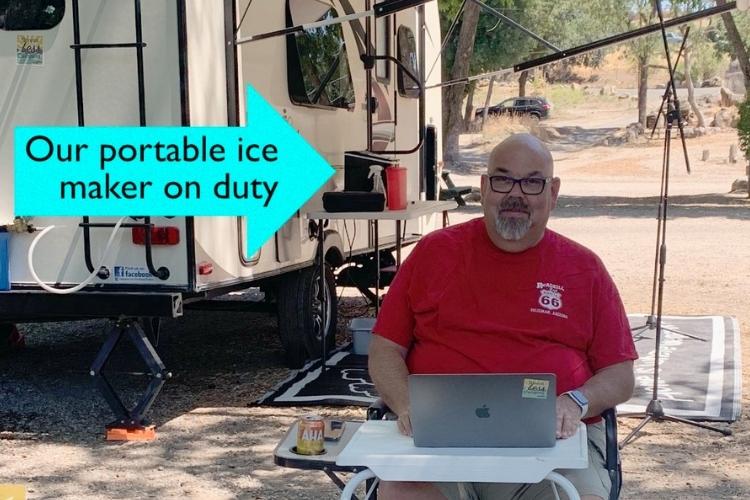
A portable ice maker is a compact countertop appliance designed to produce ice quickly, making it ideal for RVs where built-in ice makers are uncommon.
Using one is simple—just add a measured amount of water, plug it into a standard 120V outlet, and it starts producing ice within minutes. No plumbing or special installation is required.
Advantages of a portable ice maker
One of the best perks of having a portable ice maker in your RV is obvious — you get ice without using up freezer space. RV freezers, even in good models like our Dometic DMC4101, tend to be slow at freezing water. We’ve got a few Tupperware ice trays in ours, but they rarely keep up when entertaining or enjoying frequent cold drinks.
Let’s face it — unless you pack in dozens of trays, your fridge just can’t meet the demand for ice during social gatherings.
A big plus of a portable unit is its portability. You can run it inside the RV or take it outdoors when guests are over. We have a small table that attaches to the side of our Rockwood Mini Lite, right above a standard power outlet — it’s the perfect setup for our ice maker.
When we’re not traveling, we also use it at home. The ice it produces — typically donut- or bullet-shaped — is easy for our Cuisinart Evolution X cordless blender to crush, whether we’re making smoothies or pretending we’re in Margaritaville while boondocking.
Can I run a portable ice maker on battery power?
You can run many portable ice makers on battery power — including ours, which works great with a solar generator or portable power station.
These machines are surprisingly energy-efficient. Ours draws about 1.7 amps while producing ice and around 2 amps during the harvesting phase. That extra power likely comes from a brief heating cycle that helps release the ice from the mold.
Disadvantages of a portable ice maker
One of the main drawbacks of portable ice makers is that they produce ice in a donut-like shape rather than traditional cubes, due to how the machines operate.
Additionally, the ice compartment isn’t refrigerated — it’s only insulated — so the ice will eventually melt unless you’re actively using it for drinks, especially when entertaining.
Portable ice makers also require a standard 120V household power source to run.
They’re not ideal for replacing bagged ice in a cooler either, as the amount of ice they produce typically isn’t enough to keep a cooler cold for long.
That’s why we rely on our Dometic CFX3 75DZ portable powered cooler. It plugs in and keeps everything cold without needing ice. With separate fridge and freezer compartments, it offers more convenience and peace of mind on the road.
How do portable ice makers work?
Portable ice makers operate using a fairly simple mechanism. They consist of a refrigeration unit, a set of metal tubes, and a water reservoir.
Here’s how it works: the refrigeration system chills the metal tubes, while a plastic tray lifts and fills with water. As the water comes into contact with the cold tubes, it begins to freeze around them. After a set amount of time, the tray lowers again.
The system then switches modes to release the ice, causing the cubes to drop into a collection basket. If any ice begins to melt in the basket, the water typically drains back into the reservoir to be reused in the next cycle.
Things to look for in a portable ice maker for your RV
If I were shopping for a portable ice maker today, there are a few key features I’d prioritize:
Ease of cleaning – I’d want a model that’s simple to clean, especially around the area where the ice is formed. Ours has a silicone drain plug, which makes it easy to empty out after use.
Automatic shut-off – Not every machine stops when the ice bin is full, so I’d look for one that does to avoid overflows and wasted ice.
Ice size options – We really appreciate that our current unit lets us choose between large and small ice sizes. It’s a handy feature depending on the type of drink we’re serving.
Indicator lights – It’s helpful to have clear indicators that show when the tray is full or when it’s time to add more water.
So which ice maker do we have?
We use a Contoure portable ice maker, but the only reason we have it is because a customer didn’t want the one that came with their RV. For whatever reason, they had no need for an ice maker and asked us to remove it.
So, I grabbed my Leatherman, uninstalled it from their RV, and brought it home. We’ve had it for several years now, and it still works perfectly.
One summer, I pulled it out of storage during a heat wave, filled it with water, and had fresh ice in just seven minutes—it’s impressively fast.
Top 10 Ice Makers for RVs in 2025
These portable ice makers are compact, efficient, and perfect for life on the road. Whether you’re boondocking or parked at a campsite, there’s an option here to keep your drinks cold and your travels cool.
1. GE Profile Opal Nugget Ice Maker
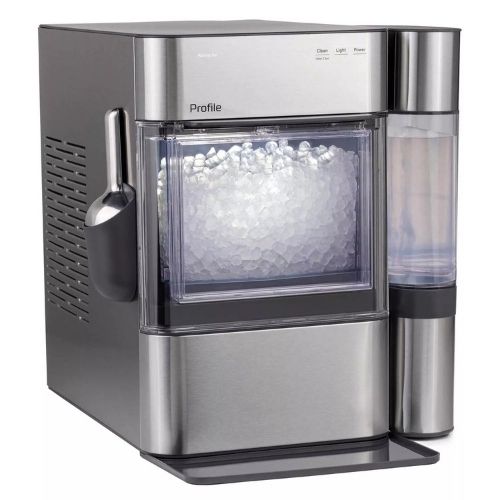
- ❄️ Nugget ice, 24 lbs/day
- 📱 Wi-Fi, self-cleaning
- 💰 ~$549
2. NewAir AI-100R
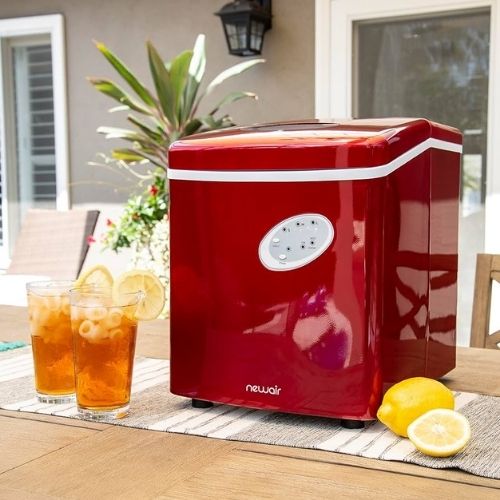
- 🧊 Bullet ice, 28 lbs/day
- ⚡ Ice in 10 minutes
- 💰 ~$223
3. Frigidaire EFIC103-AMZ
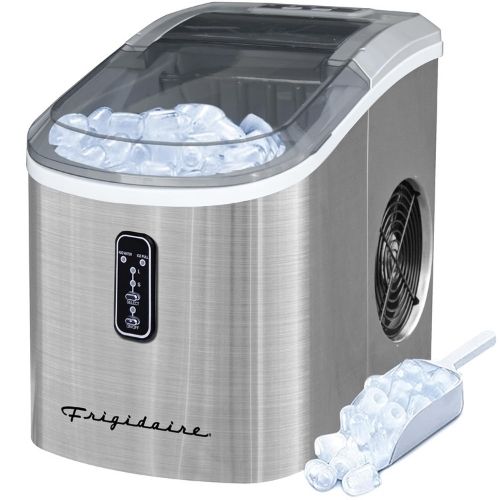
- 🧊 Bullet ice, 26 lbs/day
- 🧼 Self-cleaning, digital control
- 💰 ~$90
4. Igloo ICEB26RR

- 🧊 Cylindrical ice, 26 lbs/day
- 🔇 Quiet, LED control panel
- 💰 ~$150
5. Euhomy Ice Maker with Handle
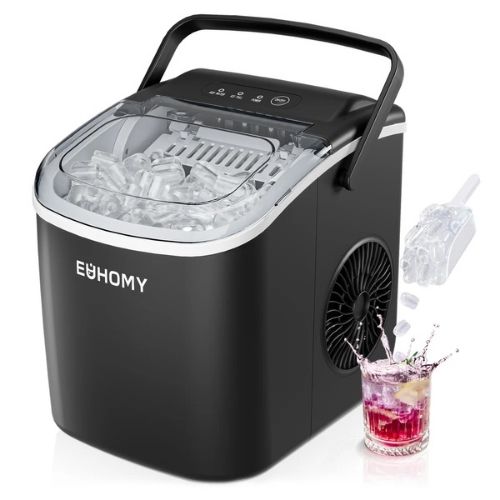
- 🧊 Bullet ice, 26 lbs/day
- 🚿 Self-cleaning, compact
- 💰 ~$85
6. EdgeStar IP210SS1
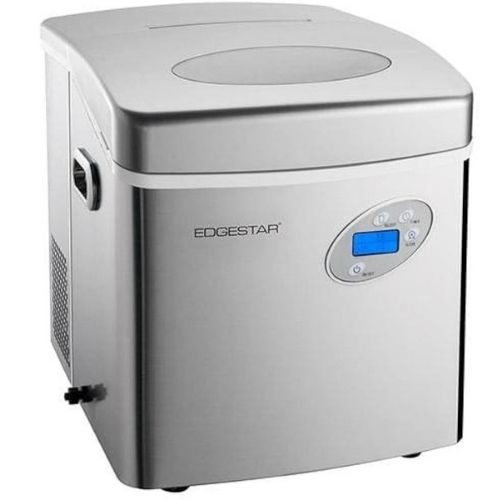
- 🧊 3 ice sizes, 28 lbs/day
- 💧 Recycles melted ice
- 💰 ~$200
7. Della Ice Maker with LCD
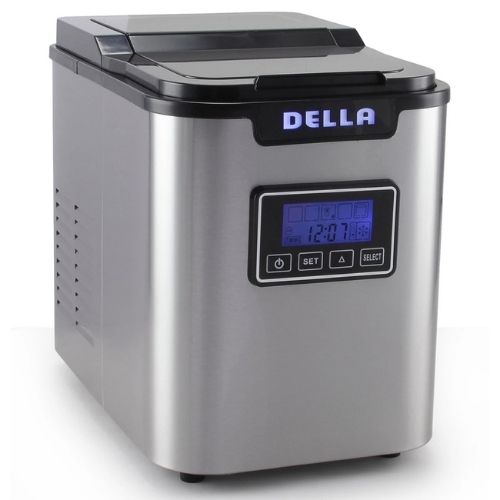
- 🧊 3 sizes, 28 lbs/day
- 🖥️ LCD display
- 💰 ~$130
8. Hamilton Beach PIM-1-3A
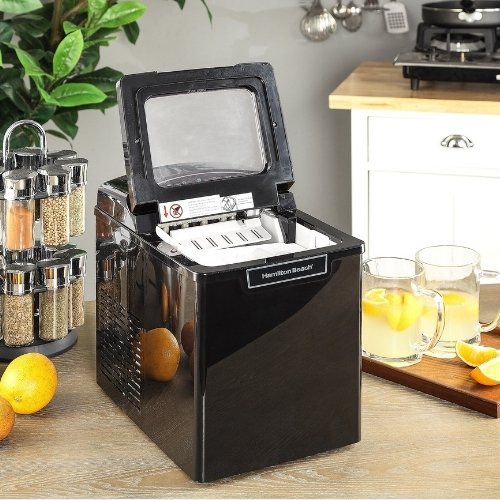
- 🧊 Bullet ice, 26 lbs/day
- 💡 Indicator lights, auto-stop
- 💰 ~$120
9. COSTWAY Portable Ice Maker
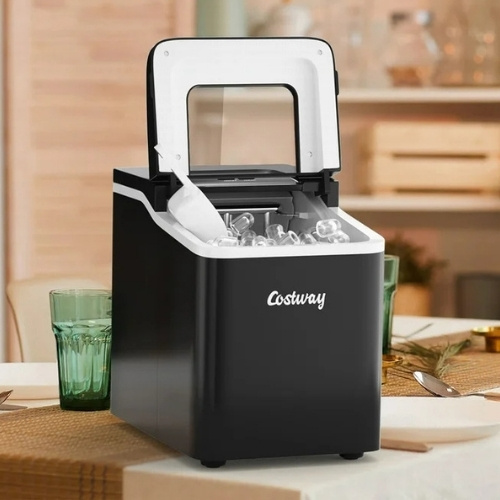
- 🧊 2 sizes, 26 lbs/day
- 🖐️ Simple control panel
- 💰 ~$110
10. HiCOZY Countertop Ice Maker
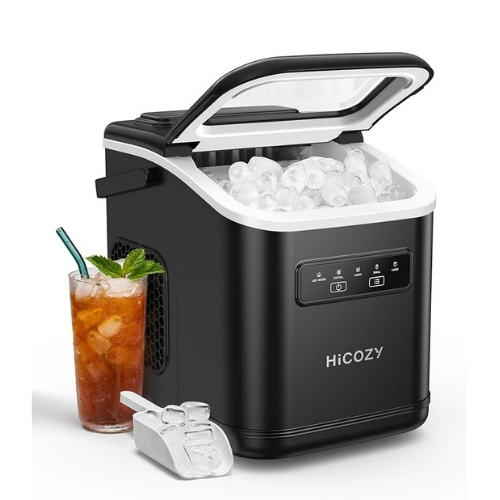
- 🧊 Compact, 24 lbs/day
- 💦 Self-cleaning, 2 sizes
- 💰 ~$100
Which brand is best?
To be honest, the brand of a portable ice maker usually doesn’t matter much. Most models offer similar features, cost about the same, and perform comparably.
You simply pour in water, wait 5 to 10 minutes, and you’ll start getting ice. On average, these machines can produce 20–30 pounds of ice per day—provided you keep them filled with water. It’s not a complicated process.
They’ll pause automatically when they run out of water or when the ice bin is full.
My advice: when you’re ready to buy, focus on what’s available, check user reviews, and compare value. Keep the essential features in mind and look out for deals.
Amazon reviews can be especially helpful—they showcase the top-rated models. Given how alike most options are, the smartest approach is to read reviews, watch for sales, and get ready to enjoy cold drinks in no time.